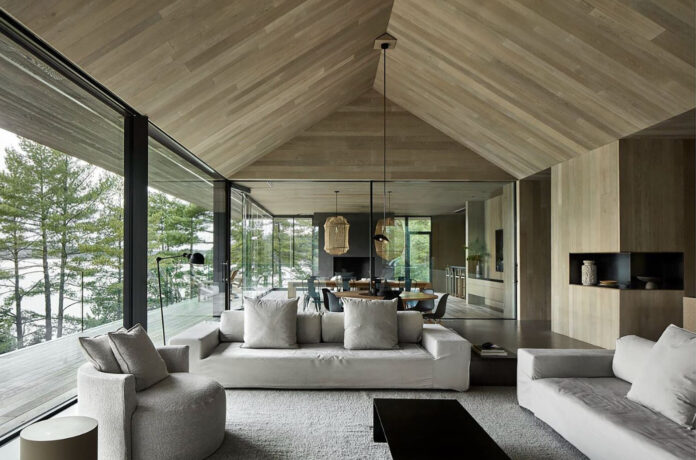Wood has always had a deep-rooted connection with human civilisation. From the earliest shelters to contemporary marvels, wood has transformed alongside architectural endeavours. Today, one can’t discuss modern design without giving a nod to architectural timber, a product that marries nature’s charm with human innovation.
- The Renaissance of Wood in Modern Structures:
Over the past few decades, there’s been a resurgence in using natural materials in building designs. This renaissance isn’t just about nostalgia but stems from a genuine appreciation of organic elements in urban spaces. There’s something undeniably appealing about integrating natural textures within man-made surroundings, and wood plays a pivotal role in this movement. By providing a balance between the old and the new, wooden components breathe life and warmth into otherwise cold, sterile environments. Furthermore, architects and designers have been exploring novel ways to incorporate wood, from facades to interior details, ensuring the material’s adaptability and relevance.
- Eco-Friendly Benefits of Employing Wooden Elements:
In the age of sustainable living, construction choices greatly influence a building’s carbon footprint. Using organic materials not only reduces environmental impact but also offers long-term benefits. Trees, during their growth, absorb carbon dioxide, effectively acting as carbon sinks. When employed in structures, this carbon remains stored, effectively reducing the overall carbon emissions associated with the building process. Moreover, with proper management, forests can serve as renewable resources, ensuring a sustainable supply without depleting nature’s reserves. The global push for green building standards and environmentally-conscious decisions amplifies the importance of such choices.
- Enhancing Aesthetic Appeal and Ambiance:
The inclusion of wooden elements in a structure invariably leads to a boost in its aesthetic appeal. There’s a reason wood has remained a favourite across cultures and eras: its timeless beauty. The warm tones, intricate grain patterns, and tactile nature of wood instantly elevate a space’s ambience. Whether it’s a bold statement wall or subtle wooden accents, the material introduces an element of luxury and comfort, transforming the character of any space. Wood’s versatility in finishes, from polished sheens to rustic mattes, allows for diverse applications tailored to a space’s design ethos.
- Strength, Durability, and Versatility Combined:
It’s a misconception that wooden components aren’t as robust or durable as their metal or concrete counterparts. When sourced and treated appropriately, certain wood types offer incredible strength, rivalling even steel in some aspects. Besides, with advancements in treatment procedures, concerns regarding termites or decay have been largely mitigated. This means that not only do these wooden components serve an aesthetic purpose, but they also contribute significantly to the structural integrity of buildings. Wood’s natural resilience to environmental changes, like temperature fluctuations, adds to its longevity.
- The Financial Implications and Value Addition:
Incorporating organic elements into architectural designs is often viewed as a luxury, implying hefty expenses. However, when one considers the long-term benefits, it becomes evident that it’s an investment worth making. Structures that incorporate natural elements tend to have higher real estate value. Moreover, the reduced maintenance costs, coupled with the longevity of wood, means that over time, the initial investment pays off, both in terms of finances and overall user experience. Beyond the tangible financial benefits, there’s also the invaluable addition of creating spaces that resonate with people, enhancing well-being and satisfaction. In an increasingly urbanised world, such natural retreats become essential sanctuaries.
Read Also: Mobile App Logo Design Tips
Conclusion:
Architectural timber has rightfully claimed its place in the pantheon of elite building materials. Its unique blend of aesthetics, functionality, and sustainability ensures that it remains a top choice for architects and designers alike. As society continues to gravitate towards eco-friendly choices and holistic living, one can only expect the popularity of natural building elements to soar even higher. Embracing this trend is not just about staying current; it’s about paving the way for a future where design and nature coexist in harmonious splendour.


































